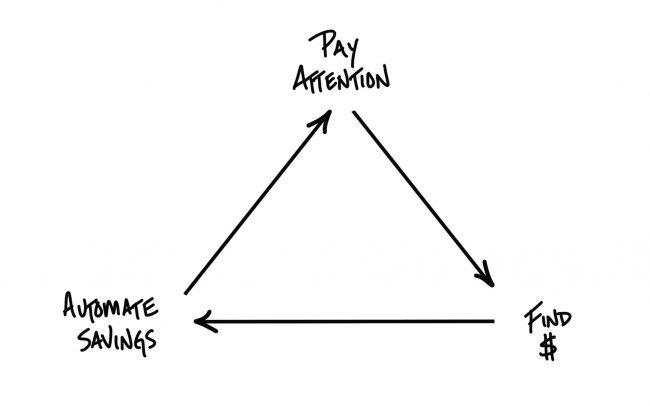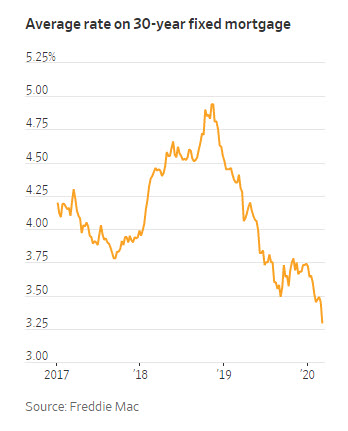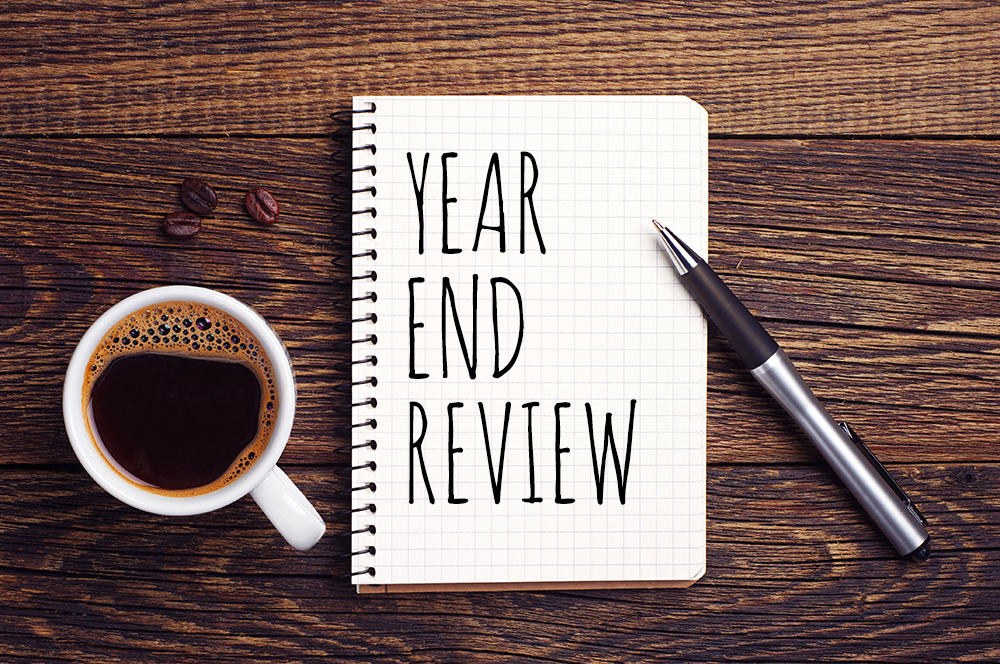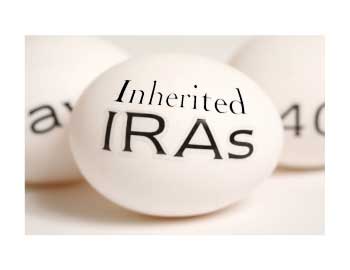Practical advice (and Frodo’s lesson)
|
|
“The toilet paper had armed guards.”
“We celebrated my birthday with a dinner party over Zoom.”
“My officemate jumped on my desk and drooled on my keyboard during a meeting.”
One day, we’ll look back on these strange days and tell stories about the COVID-19 pandemic of 2020.
But right now, we’re getting through it. One day at a time.
How are you doing? What stories can you share with me about your life right now? Email me at chrismullis@nstarcapital.com and tell me. I’d love to hear about them.
In difficult times, it’s easy to think we are alone. Especially when our loved ones and support system are far away or reduced to virtual connections.
We are all learning how to adjust to a new world and stay grounded when headlines are blaring and our very health and well-being are under threat.
I’m working on being grateful for the great things in this life.
I’m grateful for my wife.
I’m grateful for our children.
I’m grateful for our family, friends, and neighbors.
I’m grateful for work that allows me to help people in my community get through times like these.
I’m grateful for you.
What are you grateful for?
Like WWII and 9/11, we’re living through days that will define future generations and change the very fabric of our society.
I don’t envy the policymakers making grim trade-offs between life, death, and the economy. How long do we socially distance? What about the 10 million+ who have lost jobs?1 Or the businesses that have been forced to close?
I hope with all my heart that each one of them has a financial plan and someone they can go to for advice. But my head knows better. I know that most Americans can’t survive a $1,000 emergency and only 17% have a financial adviser to help them.2
What trade-offs are we willing to make to protect those at greatest risk from the disease? We can’t put a dollar figure on human life. But we can put a dollar figure on the human cost of jobs lost and businesses closed.
The next few weeks are going to be tough for all of us. And I want you to know that I’m here for you.
Layoffs and furloughs are happening and I’m helping affected clients create a game plan to get through the next few months. If this happens to you or someone you love, please let me know immediately so I can help you determine if you’re eligible for special assistance. And, also please remember our COVID-19 pro bono program that we’ve launched to serve people who don’t normally have access to fiduciary advice.
How do we make good decisions with so much uncertainty and mixed information?
We make a choice:
We can choose to crumble under the weight of fear and uncertainty…
We can choose to simply hunker down and endure…
We can choose to grow, flourish, and come out stronger on the other side. We can be grateful for our blessings and focus on what’s within our control: our mindset, our behavior, and the actions we take.
I am fundamentally optimistic about humankind’s ability to weather this crisis and use it to grow.
I’m optimistic about how our society will adapt and change due to this crisis. Some of the greatest changes and innovations in history grew out of frightening, pessimistic times.
I’m optimistic about the heroes fighting the disease on the front lines.
I’m optimistic about the people helping friends, neighbors, and strangers stay safe and comfortable.
I’m optimistic that those with jobs will continue working to keep this country going while we wait and heal.
I’m optimistic about the innovators staying up late in labs, workshops, factories, and offices around the world to create vaccines, treatments, and tools to beat the virus.
I’m optimistic about the new inventions and technologies that will grow out of necessity.
I don’t know what challenges the world will throw at us in the coming days and weeks. I do know that I am grateful to be surrounded by smart, motivated people who push me to do better.
How can you show up for the people around you? How can you be your best self in these times?
How can I help you do it? Email or call and let me know.
Be safe and be well,
Chris
 |
Chris Mullis, Ph.D. Founding Partner NorthStar Capital AdvisorsFinancial Planning. Wealth Management. Since 2006 AskNorthStar.com |
2https://www.bankrate.com/banking/savings/financial-security-january-2019/
https://www.cnbc.com/2019/04/01/when-it-comes-to-their-financial-future-most-americans-are-winging-it.html
Source: WCCB TV / Local Financial Advisors Say “Stay the Course” Following Historic Market Drop
Dr. Chris Mullis, NorthStar’s Founding Partner, did an on-air interview with WCCB TV news anchor Drew Bollea discussing how people should think about their investments in the midst of a global panic induced by the coronavirus. (click image to watch video)
Ironically, this interview was recorded on March 9, 2020 — exactly 11 years to the day since the crescendo of global panic that marked the bottom of the 2007-09 bear market.
Here’s the memo that we sent clients and friends ahead of this interview that elaborates on the points made during the news report:
March 9, 2020
At this morning’s opening level of 2,764, the S&P 500 is down over 18% from its all-time high, recorded on February 19. Declines of that magnitude are fairly common occurrences — indeed the average annual drawdown from a peak to a trough since 1980 is close to 14%. But such a decline in barely a month is noteworthy, not for its depth but for its suddenness.
As we all know by now, the precipitants of this decline have been (a) the outbreak of a new strain of virus, the extent of which can’t be predicted, (b) the economic impact of that outbreak, which is equally unknown, and (c) most recently, the onset of a price war in oil. (That last one is surely a problem for everyone involved in the production of oil, but it’s a boon to those of us who consume it.)
The common thread here is unknowability: we simply don’t know where, when or how these phenomena will play out. And in my experience, the thing in this world that markets hate and fear the most is uncertainty. We have no control over the uncertainty; we can and should have perfect control over how we respond to it.
Or, ideally, how we don’t respond. Because the last thing in the world that long-term, goal-focused investors like us do when the whole world is selling is — you guessed it again — sell. Indeed, I welcome your inquiries around the issue of putting cash to work along in here.
On March 3, the erudite billionaire investor Howard Marks wrote, “It would be a lot to accept that the US business world — and the cash flows it will produce in the future — are worth 13% less today than they were on February 19.” How much more true this observation must be a week later, when they’re down 18%.
Be of good cheer. This too shall pass.
 Growing your wealth is a combination of making money and saving money. Today we’re focused on the latter half of that equation. Current trends in the debt market could save thousands of dollars per year for mortgage borrowers.
Growing your wealth is a combination of making money and saving money. Today we’re focused on the latter half of that equation. Current trends in the debt market could save thousands of dollars per year for mortgage borrowers.
Mortgage rates fell to their lowest level on record today, pulled down by fears that the spread of the coronavirus could weigh on the U.S. economy.

The average rate on a 30-year fixed-rate mortgage fell to 3.29% from 3.45% last week (see chart). This is its lowest level in its nearly 50-year history. The 15-year fixed-rate mortgage dropped to 2.79% from 2.95% the prior week.
Mortgage rates are closely linked to yields on the 10-year Treasury, which this week dropped below 1% for the first time following an emergency Federal Reserve rate cut on Tuesday. Expectations are that the 30-year fixed rate could even drop below 3% in the next few weeks.
These historically low interest rates represent a special opportunity to potentially save thousands of dollars per year by refinancing your mortgage.
Whether it makes sense to refinance depends on a host of factors.
We want to help you do the math and decide if you should refinance. We invite you to share the key parameters of your mortgage loan confidentially and securely using this link:
We will dig into your data and make a detailed evaluation. We will come back and advise you on how much you could save now, or what’s your future trigger point for capturing significant savings as rates continue to evolve.
We’re strong believers in the abundance cycle. Please share this offer to family & friends and share the wealth!

(Holiday decorations & countdown courtesy of a very excited 11-year-old named Benjamin Mullis)
Let’s face it. Buying meaningful gifts for our family and friends is really, really hard. If you want to give something that has a larger impact long after the holiday season has passed, why not give the gift of financial education and wisdom for living a fulfilled life?
Given the academic background of our firm, I know the following is going to be a big shocker. Here at NorthStar, we love reading books and we love giving books as gifts! Below you’ll find the NorthStar Guide to Gifts That Pay Off. It’s full of our favorite book and money-related gift recommendations for those ages 4 to 94!
So what’s the most valuable holiday gift of 2019? A fun lesson in financial literacy and living your best life!
Happy shopping,
NorthStar Capital Adivsors
|

The end of the year provides a number of financial planning opportunities and issues. These include tax planning issues, issues surrounding investment and retirement accounts, charitable giving, cash flow & savings, and insurance & estate planning issues.
We use the checklist below to proactively scan for many actionables to help serve our clients. In this checklist, we cover a number of planning issues that you need to consider prior to year-end to ensure you stay on track, including:
This is a comprehensive checklist of the types of year-end planning issues that you should be discussing with your financial advisor to ensure you maximize cash flow and tax opportunities in the current year and beyond.
|
 “Many NFL, NBA and Major League Baseball players have a penchant for losing most or all of their money. It doesn’t matter how much they make. And the ways they blow it are strikingly similar.”
“Many NFL, NBA and Major League Baseball players have a penchant for losing most or all of their money. It doesn’t matter how much they make. And the ways they blow it are strikingly similar.”
— Sports Illustrated
Barry Ritholtz gives a good run down on how professional athletes go broke:
Youth and inexperience: Most professionals see their salary gradually increase over the course of their career. By the time they are making the big bucks, age and experience has taught them (more or less) how to manage their finances.
Not so for the pro athlete. After being an unpaid student athlete in college, they suddenly have access to millions of dollars. I don’t know about you, but I am fairly certain that if someone gave me $2 million when I was 21, I would have died in a fiery Ferrari wreck or some other foolish thing. It is a simple formula: Youth plus inexperience with money equals bad outcomes.
Athletes have short careers: Injuries, trades and the sheer quality of competitive talent means a twenty-year sports career is the exception, not the rule. On the other hand, white-collar professionals enjoy careers that last 30, 40, even 50 years — more time to amass their wealth, as well as a much longer period to figure out how to manage it.
Young athletes spend too much money: Suffice it to say they spend lots and lots of money, often more than they actually have. Divorce, child support and the costs of an entourage all eat into the cash flow.
Dazzled by the lifestyles of veterans — whose longevity and endorsement deals put them way ahead of the average player in terms of income — these professional competitors may feel pressure to compete off the field. Trying to keep up is a recipe for disaster.
Everyone takes home much less than they realize: Holding aside the issue of unwise spending, let’s look at nondiscretionary spending. GQ analyzed the finances of the typical athlete making $5 million a year. Right off the top, Uncle Sam and the resident state where he plays takes a hefty share — about half for someone in that top tax bracket. Then you have the professional managers, lawyers, accountants, etc. The agent takes $250,000, while the manager may take up to twice that amount. Trainers, nutritionists, travel and courtesy tickets all eat into the net.
Before spending the first discretionary dollar, the typical $5 million player is already down about 70 percent of the gross, to $1.5 million. That sounds like a lot of money, but a naive kid who has a $5 million dollar budget in his head can quickly find himself way behind.
Barry’s five simple steps that athletes (and non-athletes!) can take to avoid financial crisis:
1 Be involved: It is important that a young investor becomes involved with financial planning from the beginning of a career. He should understand what his take-home pay is (after taxes and fees) — and know what he is spending money on.
Be aware of the other numbers involved: What your career expectancy is. How much you are likely to make. What it is going to cost to live a certain lifestyle.
2 Have a plan: A young athlete should plan for three phases of a career: rookie years, top earning years and the life after sports.
In the first part of a career, the emphasis should be on improving your game, and saving money. Don’t worry about indulging in luxuries; you have the rest of your life to do that. Once you enter your prime earning years, you can loosen up a touch and spend more — but always within your means.
The last part of athletes’ careers is often the longest: when they are no longer playing professional ball. Having enough saved to carry them for the next 40 years is important. So, too, is having a second career — whether as an entrepreneur or a color commentator on TV sports broadcasts or as a coach.
Mapping out a workable plan for these three phases is crucial to avoiding that “other” phase: Bankruptcy.
3 Keep your costs low early in your career: Investors learn that costs, taxes and excessive fees are a killer of portfolios over the long term. So, too, are all of the small costs that eat into a professional athlete’s financial pie.
It helps to find a more seasoned and experienced teammate to walk you through what you should and should not be paying for.
4 Avoid debt and leverage: Learning to live within your means is a crucial financial skill for anyone. It is especially valuable for someone earning big bucks for what is likely a few short seasons. Debt simply means you are living beyond your means, even at those big salaries.
The latest snare waiting to trip up the unwary and impatient young athlete is the payday loan. For a very large fee, professional athletes can get huge advances on their salaries. These loans can be usurious, with fees and interest adding up to annual rates of 25 percent or higher. These are to be avoided at all costs.
5 Keep your investments simple: What most people think is the hardest aspect of finance is in reality the simplest: Avoid complex (private placements) or expensive (hedge funds or private equity) investments. Don’t make loans to friends or family. Don’t back start-ups. Don’t invest in new technology. Never buy fancy financial “products.” And whatever you do, for God’s sake, don’t put money into a restaurant.
Instead, have a simple asset allocation model of broad indices (U.S. equities, emerging market stocks, corporate bonds and Treasuries). You are in your early 20s, so you should have a 40- to 50-year time horizon for these investments. Don’t waste your time stock-picking or timing, just let the markets work for you. Build a portfolio of high quality, tax-free municipal bonds (especially if you live in a high tax state). These will pay you an income as long as you hold them.
Source:
Barry Ritholtz / WP
 Inheritances received via an IRA can be advantageous since you can choose to stretch the required distributions across your life expectancy, giving the assets more time to grow (plus taxes aren’t due until withdrawals are made). Here are key best practices to keep in mind:
Inheritances received via an IRA can be advantageous since you can choose to stretch the required distributions across your life expectancy, giving the assets more time to grow (plus taxes aren’t due until withdrawals are made). Here are key best practices to keep in mind:
 Tis the season to select your health insurance plan either through your employer’s offering or the private insurance market. If you’re considering a high-deductible health plan (HDHP), keep in mind that many (but not all!) come with the fantastic opportunity called a Health Savings Account (HSA).
Tis the season to select your health insurance plan either through your employer’s offering or the private insurance market. If you’re considering a high-deductible health plan (HDHP), keep in mind that many (but not all!) come with the fantastic opportunity called a Health Savings Account (HSA).
We love HSAs because they do two things:
The government makes these accounts triple tax-advantaged because they want to incentivize you to save for your future medical costs. We know as the nation greys and gets older, we need to have a pot of money set aside to cover our potential out-of-pocket costs.
Here’s the triple tax saving advantage:
Be careful when you select a high-deductible health plan (HDHP) to make sure it qualifies for HSA eligibility:
HSAs can be one of your best friends for the future.
 A new academic study finds that more financially knowledgeable people earn a higher return on their 401(k) retirement savings.
A new academic study finds that more financially knowledgeable people earn a higher return on their 401(k) retirement savings.
Dr Robert Clark (NC State University), Dr. Annamaria Lusardi (George Washington University), and Dr. Olivia Mitchell (University of Pennsylvania) analyzed a unique dataset that combined 401(k) performance data for 20,000 employees plus financial literacy data for the same workers.
Investors deemed to be more financially knowledgeable than peers enjoyed an estimated 1.3% higher annual return in their 401(k)s or other defined contribution plans than those with less knowledge.
According to the study’s authors:
“We show that more financially knowledgeable employees are also significantly more likely to hold stocks in their 401(k) plan portfolios. They can also anticipate significantly higher expected excess returns, which over a 30-year working career could build a retirement fund 25% larger than that of their less-knowledgeable peers.”
Financially savvy people tend to save more and are more likely to invest those savings in the stock market. But past studies haven’t clearly demonstrated that these people necessarily make better investment decisions. The authors look at patterns in 401(k) retirement accounts and find that more sophisticated investors do indeed get better returns on their savings.
Source: “Financial Knowledge and 401(k) Investment Performance”

